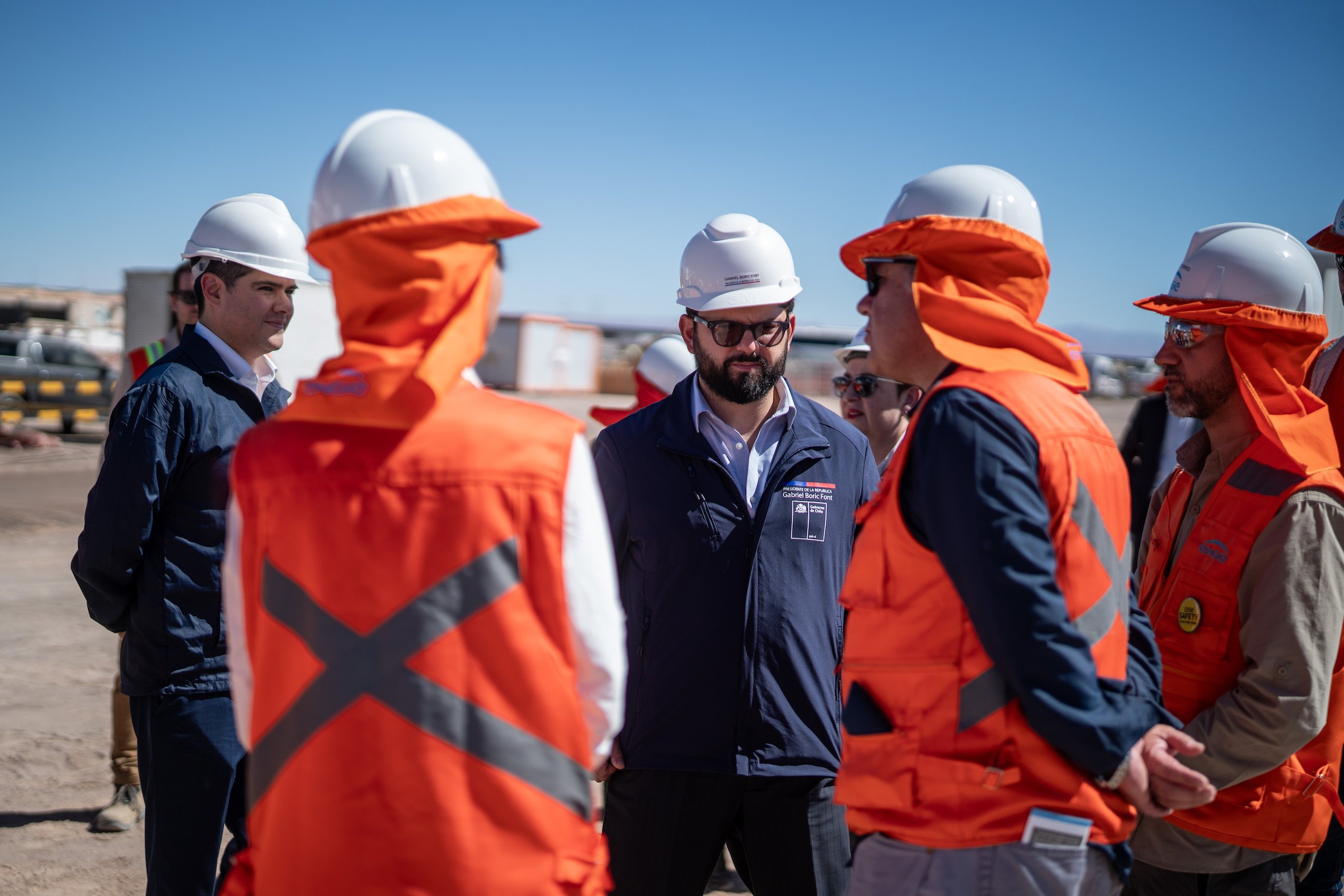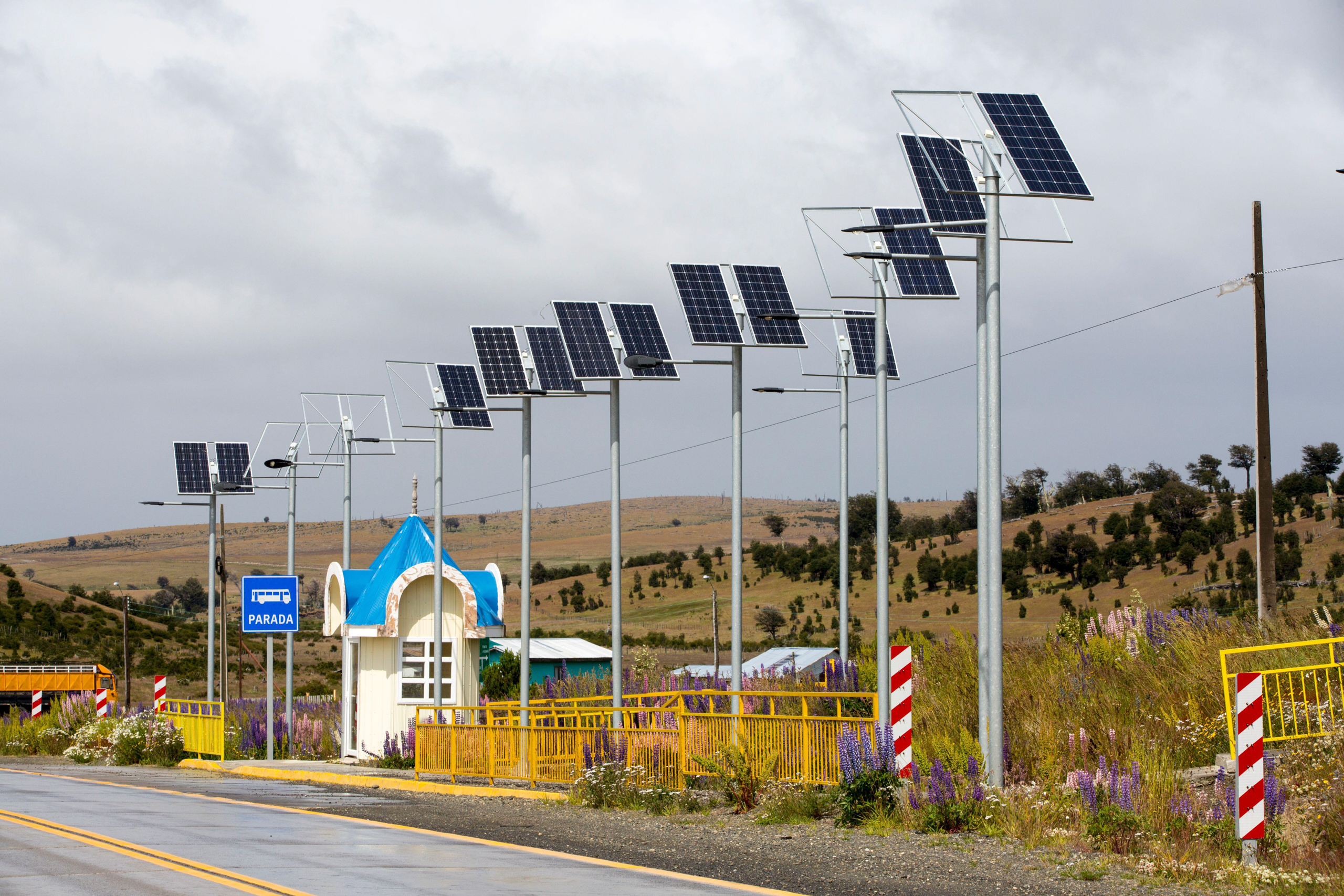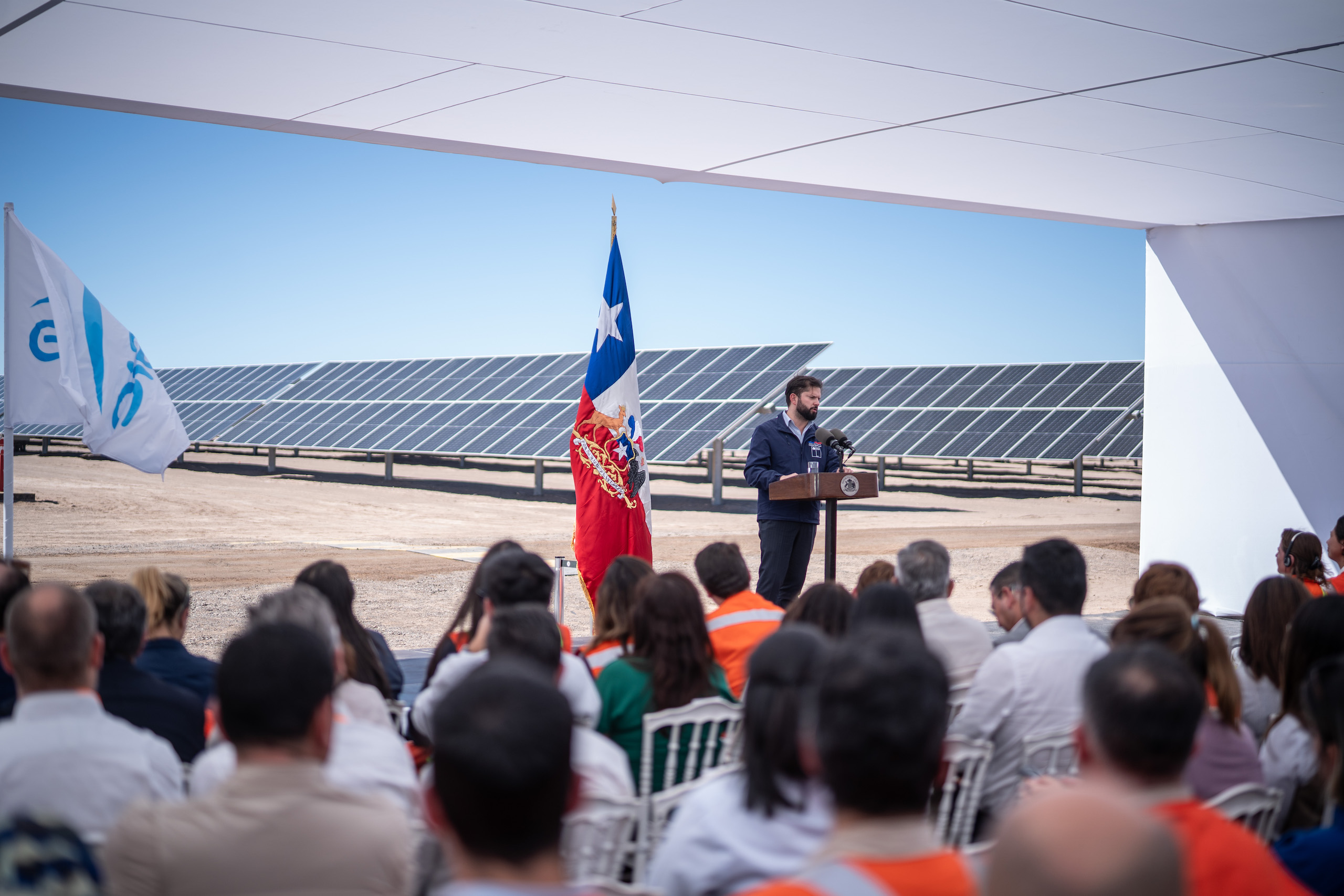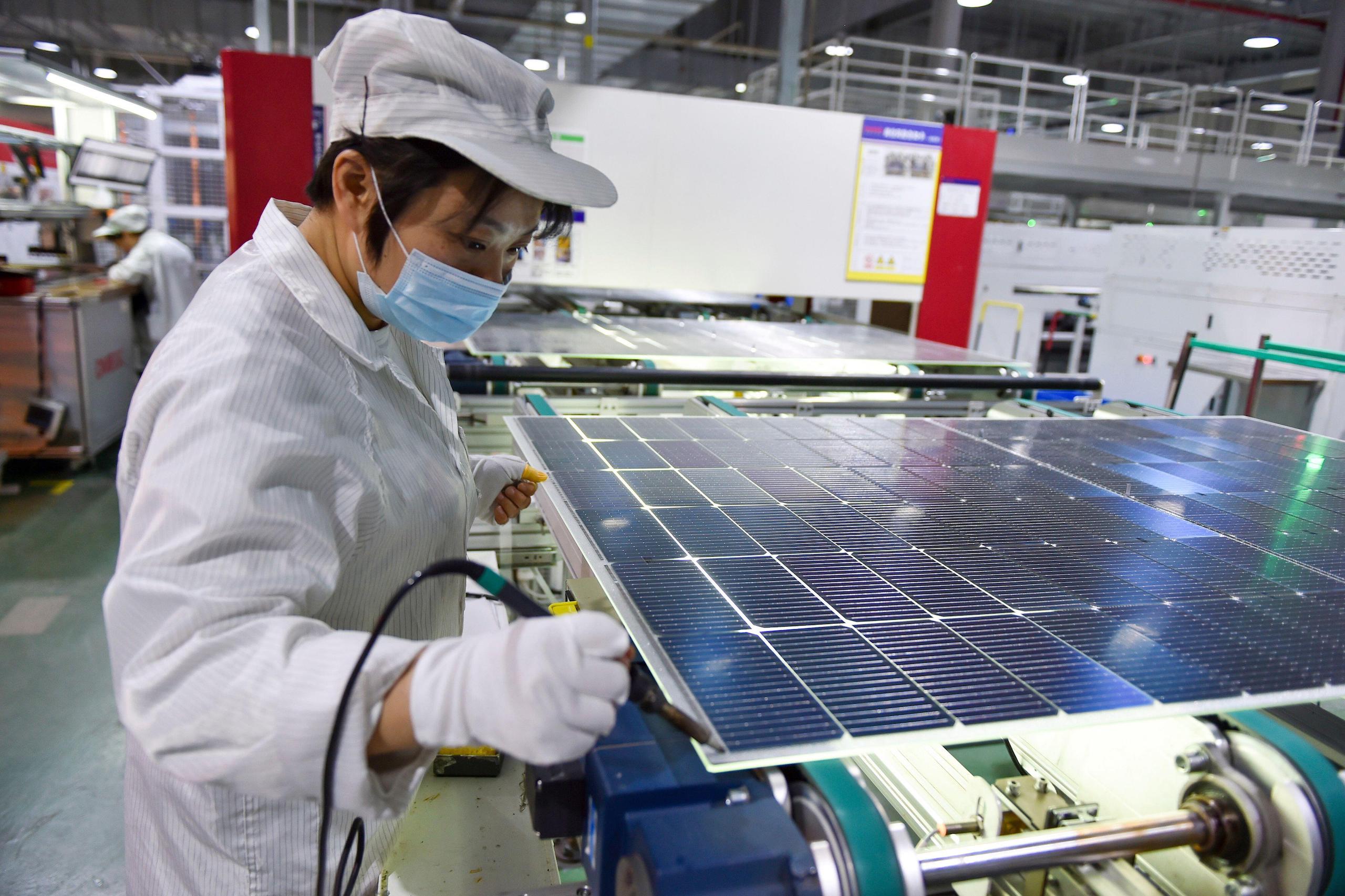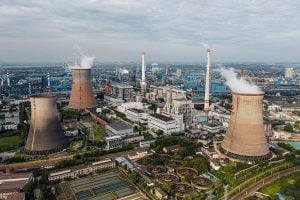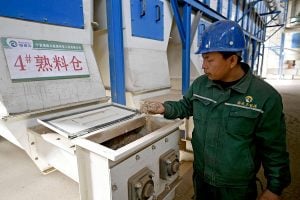Renewable energy is Latin America’s present and future.
In 2023, the region generated 64% of its electricity from clean sources, far above the global average of 39%. As production continues to ramp up, the need to store this energy is increasing alongside it.
“Simply put, the reason for storing electrical energy is that you can decide when you use it,” explains Claudio Seebach, Dean of the Science and Engineering Faculty at Adolfo Ibáñez University in Santiago, Chile. “Energy can be stored for when demand is highest – it solves the natural imbalance between moments of supply and demand.”
This is of particular importance in the renewables sector, where solar and wind generation provide clean, but intermittent power: when the sun isn’t shining or the wind drops, generation stops with it.
Chile, whose energy mix has one of the region’s highest shares of wind and solar power, offers a clear example of the challenges these dips can create.
The country benefits from a unique geography and climate: in the north, the Atacama Desert boasts the highest levels of solar irradiance on Earth and, in the far south in Patagonia, Chile is buffeted by some of the strongest winds on the planet.
But at times, these features count against it, too. For half the year, the sun sets at a similar time all along the slender tract of land it occupies on South America’s coastline, creating an immediate need for energy storage – a sector in which the country is already making progress, with the launch of ambitious targets, strategies to incentivise investment in technology, and multiple projects already online and in the pipeline.
Energy storage options
Today, energy can be stored in multiple ways, including using banks of large-scale batteries, which can store electricity before it is injected back into national grids. Though lithium-ion batteries are the most efficient on the market, the wider use of lead or sodium alternatives could be just around the corner.
“Battery storage is efficient, but very short term,” says Enzo Sauma, a professor in industrial and systems engineering at Chile’s Pontifical Catholic University. “If you store energy in a battery one month and want to use it the next, then there will be nothing there because the energy dissipates. But you can use the energy very efficiently by storing it on a day where there is lots of sunlight and then releasing it overnight.”
Longer-term options have proven to be more expensive. Pumped-storage hydropower, which involves pumping water up to a reservoir before releasing it back down through a turbine, is currently the most widely used solution worldwide. It has been employed in the mining industry for decades, but projects have a large footprint and require altitude differences. Newer alternatives include molten salt storage – which uses salt as a medium for thermal energy – and gases produced using renewable sources, such as green hydrogen and green ammonium. These processes are less efficient, but allow for energy to be stored for months or years.
The sharp growth in renewable energy production, and the pursuit of ambitious global targets on new capacity, bring with them a significant challenge, alongside huge potential for the storage market’s expansion. The global energy storage market is currently valued at around USD 246 billion, with an estimated 387GW of new energy storage capacity anticipated to be added globally by 2030, according to a report from US-based law firm Morgan Lewis. This is a 15-fold increase compared to the end of 2021.
Chile is the region’s poster child
By 2030, Chile is seeking to supply 70% of its total energy consumption with renewable energy sources, and aims to reach carbon neutrality by 2050. Though its nightly solar shortfalls are currently plugged by fossil fuel generation, the country has pledged to close its remaining coal-fired power plants by 2040. To achieve its ambitious renewable energy targets, developing energy storage is imperative. But the country has made strong progress, fast becoming Latin America’s poster child for such technologies.
Having launched a national storage strategy in 2023 that sets targets and aims to attract investment in the sector, and with a large pipeline of projects on the way, Chile’s installed storage capacity could soon overtake that of the US.
Chile’s first battery energy storage projects were commissioned in 2009, and all but two of its 16 administrative regions have facilities in operation, under construction or in the planning stage. The greatest installed capacity is found in the northern regions of Antofagasta and Tarapacá, the country’s solar powerhouses.
“We’re living through a true energy storage revolution in Chile,” a spokesperson for Chile’s energy ministry told Dialogue Earth. “At the moment, there are storage projects in operation with a total capacity of 387 megawatts, and others in different stages of development which will allow us to reach a total capacity of 2 gigawatts by 2026.”
The government expects a total investment of USD 2 billion over the next two years, the spokesperson added. “This is key for our energy transition. It will afford us greater flexibility in our electricity system and reactivate the economy in the north of the country to improve the quality of life for the people who live there.”
Chile will add a further 1 GW of capacity by 2026, with public land set aside by the government for energy storage projects in a reportedly imminent tender. The energy ministry spokesperson told Dialogue Earth that the country’s environmental assessment body is currently assessing the viability of 300 more storage projects, with a total capacity of 16 GW. According to some projections, between 2026 and 2032, Chile’s total storage capacity could double to 4 GW.
At the moment, the country’s four largest energy generation companies are leading the way with investment in storage: Engie, Enel, Colbún and AES Andes.
Elsewhere, Chinese battery maker BYD has signed an agreement with Spanish firm Grenergy to provide its batteries for a USD 1.4 billion energy storage facility in the Atacama Desert, which they claim will be the largest of its kind globally. The project is expected to be brought online within three years. BYD declined a request for comment when contacted.
Elsewhere, in 2023, Canadian-owned Innergex, the third-largest renewable energy generator in Chile, inaugurated its first electricity plant in the country, featuring a 50 MW battery energy storage system (BESS). Engie Chile, meanwhile, has two lithium-ion battery storage systems in operation, with a total capacity of 141 MW. At the beginning of next year, the company will inaugurate a 264 megawatt-hour, 96-battery facility, taking its total BESS portfolio in Chile to 371 MW.
A spokesperson for Engie Group told Dialogue Earth that Chile is seen as one of its strategic countries for supporting the energy transition, which “entails the investment of USD 1.8 billion by 2027. Our plan in Chile considers incorporating 1.4 GW to reach 2 GW of installed capacity in clean energy, including 2 GWh in storage systems”.
Alongside its geographical advantages, analysts have highlighted how Chile’s open attitude to foreign investment – it has free trade agreements with countries representing nearly 90% of the global economy – and competitive business environment have led to new innovations being adopted quickly. Though it has made progress, experts still point to the need for regulation and to continue improving conditions for the uptake of capital-intensive energy storage technology.
“It’s likely that, within five years, we will have 3 GW energy storage capacity in Chile,” says Sauma. “If battery technology keeps coming down in price, this can keep growing. The potential for the sector in Chile is very, very high.” Battery costs have fallen by 90% in the last 15 years, and the cost of utility-scale storage projects is projected to fall by 40% by 2030, according to a recent International Energy Agency report.
This is an incredibly fast race, and you need regulation to generate confidence for investmentClaudio Seebach, Dean of the Science and Engineering Faculty at Adolfo Ibáñez University
Seebach notes that “this is an incredibly fast race, and you need regulation to generate confidence for investment. That’s the first thing we’ve learned from Chile’s case”.
In this respect, Chile’s government has attempted to stimulate the sector.
In October 2022, congress passed a bill to incentivise the development of energy storage and electric transport. The legislation allows energy companies to opt for remuneration for the energy they store and then inject back into the system. However, detailed regulation on the function of the bill is still being discussed by Chile’s national energy commission. In the absence of regulation governing real-life application of such remuneration, “people are holding off investing in batteries,” says Sauma.
China’s role in battery storage
Chinese companies are the world’s leading producers of lithium batteries, and have shown increasing interest in Latin America’s vast lithium reserves – including in Chile – to supply its own juggernaut clean energy industries that are key to transitions in China and abroad.
Back home, President Xi Jinping has actively pushed for the development of renewable energy generation as China races to meet its pledges to peak carbon dioxide emissions by 2030 and achieve carbon neutrality by 2060. It is already making strides: June 2023 marked China’s total installed non-fossil fuel energy power generation capacity overtaking fossil fuel generation for the first time.
The Chinese energy storage industry has experienced rapid growth in recent years, too, with accumulated installed capacity soaring from 32.3 GW in 2019 to 59.4 GW in 2022. By 2027, it is expected to reach 97 GW.
China is also developing rapidly in storage technology at various levels, says Yulong Ding, a professor at the University of Birmingham’s School of Chemical Engineering. “Nationally, they have a lot of policies to encourage storage, and there is technology being developed at all levels of the supply chain,” he notes. Additionally, Ding reports that “Chinese universities have built specific energy storage programmes for training the next generation of energy storage engineers”.
Creating this specific expertise is becoming a priority, and one in which experiences are increasingly being shared, including between China and Chile. Chinese company Tianqi Lithium – one of the world’s largest lithium producers, and which owns roughly a fifth of the Chilean mining firm SQM – last year launched an exchange programme to support the development and upskilling of Chilean researchers in the lithium sector. The initiative offered them a month-long trip to the city of Chengdu, and opportunities for internships, workshops and contact with the Chinese lithium industry, including relating to energy storage.
Tianqi has faced a tricky ride since acquiring its share of SQM in 2018, and is currently mired in legal disputes linked to the Chilean government’s moves to exert greater control over lithium resources. But these specific challenges have not dissuaded broader investment from China in new energy areas – and the country is likely to remain a key partner, if Chile’s energy transition is to be a success. Chinese companies have in recent years built, or announced plans to build, Chile’s longest power line, solar plants and wind farms, while in battery storage, solar giant Trina has launched three projects in the country.
